Release notes
version 3.3
Release notes 3.3 of our solution for network optimization
Below you will find an overview of the innovations and features of the new version.
You can find more information about our solution for network optimization here.
Our latest update introduces a powerful grouping feature that streamlines supply chain optimization by allowing users to group locations, periods, materials, and transportation types. This enhancement dramatically increases efficiency by allowing users to define thousands of transportation lanes in a single step, rather than requiring individual lane definitions. It also improves data clarity, making complex relationships easier to understand and modify. For example, defining a lane for “Frozen Goods” from “All Locations” to “EU Customers” via “Refrigerated Truck” is now as simple as one row. With pre-defined groups such as “All Locations” and “All Customers” available by default, users can take advantage of this feature immediately without any additional setup. This makes modeling supply chain networks faster, clearer, and more intuitive.
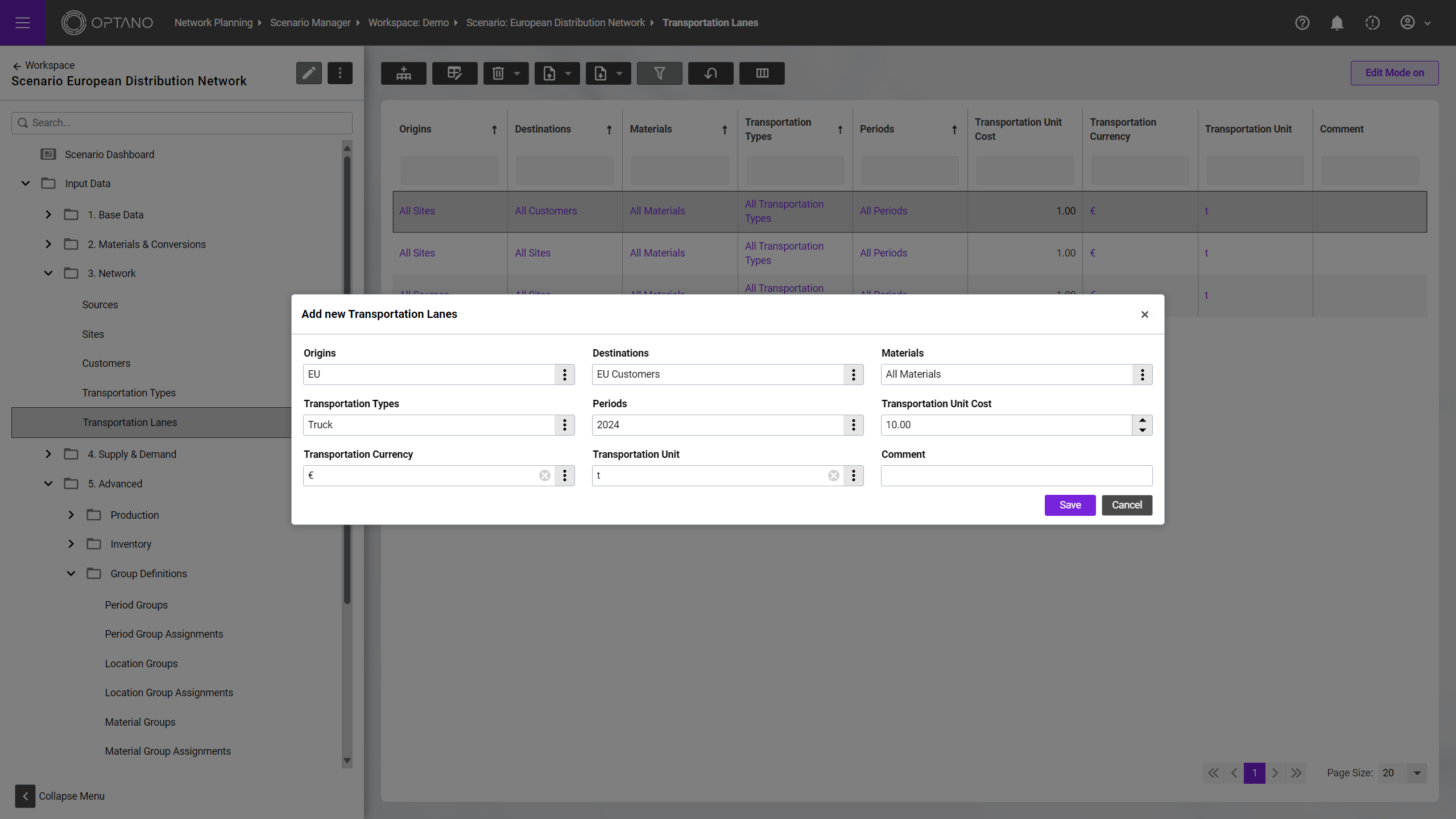
Our new feature provides a comprehensive visualization of all flows and transportation within your supply chain network. It automatically clusters nodes to give you a clear overview, even in complex networks with many nodes, but can be turned off for more detailed inspection. The feature also includes advanced filtering options that allow you to focus on specific locations, materials, time periods, or transportation types. This functionality is particularly valuable for gaining insight into optimized material flows, especially in distribution scenarios. In addition, users can easily inspect individual locations and analyze all inbound and outbound flows for more detailed network management.
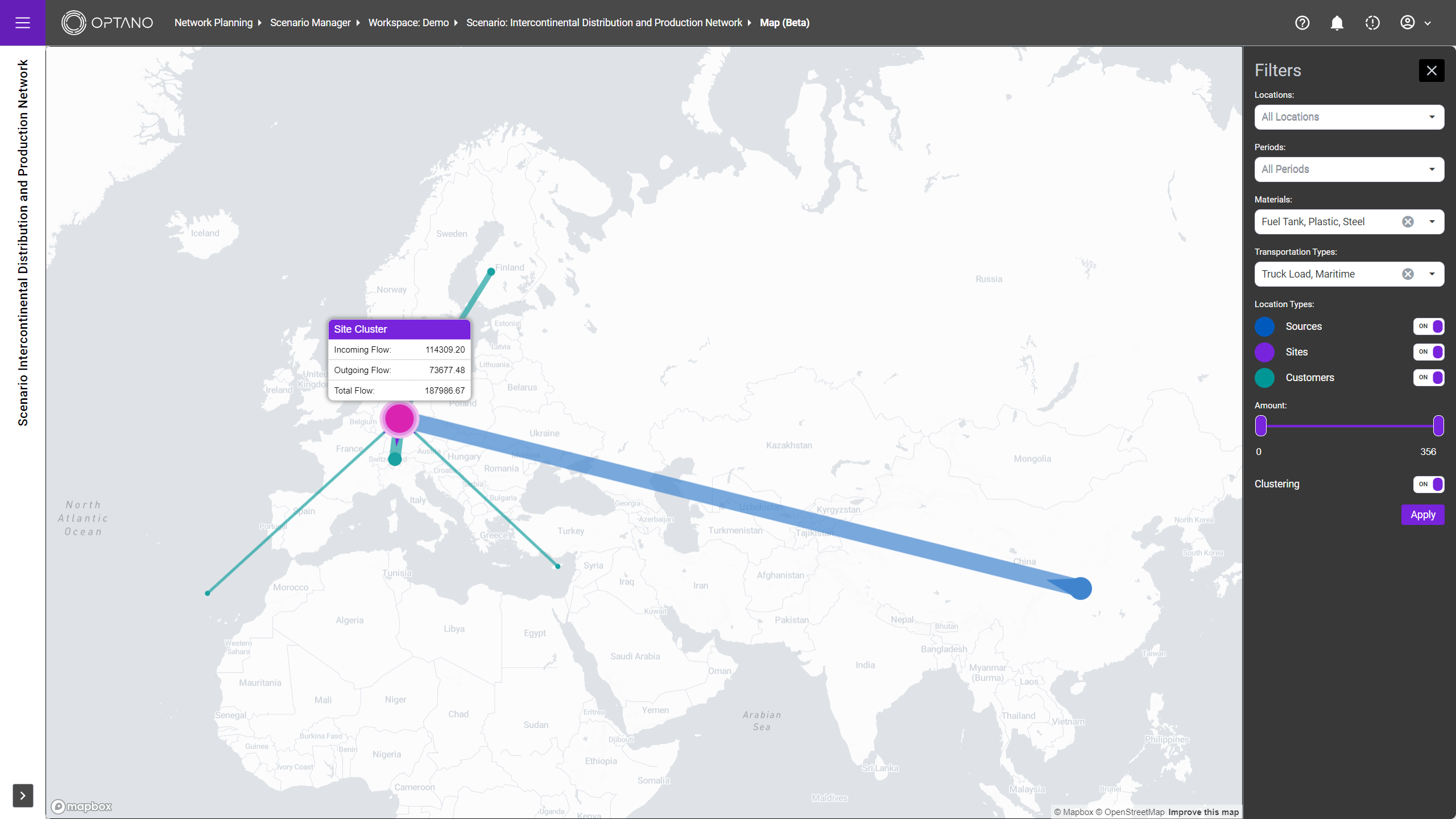
This new feature gives users the flexibility to model a wide variety of constraints on the movement of materials. You can define origins, destinations, transportation types, and materials, while also setting restrictions on the total flow for any selected time period. This allows users to address a wide range of business scenarios, such as restricting all outbound flows from a site, modeling sites that cannot handle certain materials, or ensuring that customers are only served from certain locations. Instead of managing multiple tables and columns as in previous versions, users now work with a single, intuitive table to efficiently and easily handle multiple constraints.
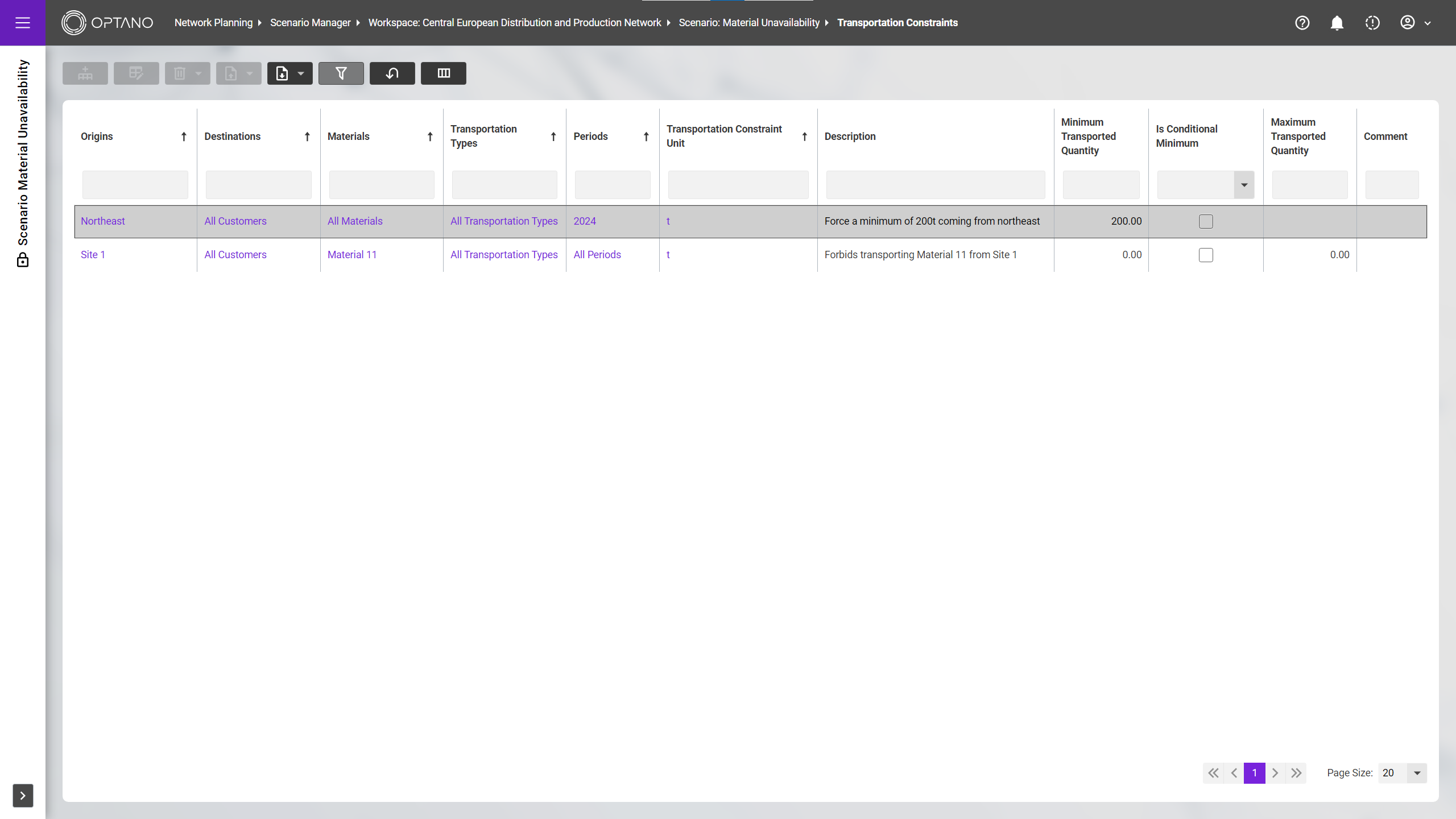
This feature allows users to model different modes of transportation, such as Full Truck Load (FTL) and Less than Truck Load (LTL), with the added flexibility of setting minimum required capacities for optional modes. This is particularly useful when FTL can only be used for a certain volume of goods. It provides a more accurate and realistic representation of transportation scenarios, ensuring that capacity constraints are effectively managed within the supply chain model.
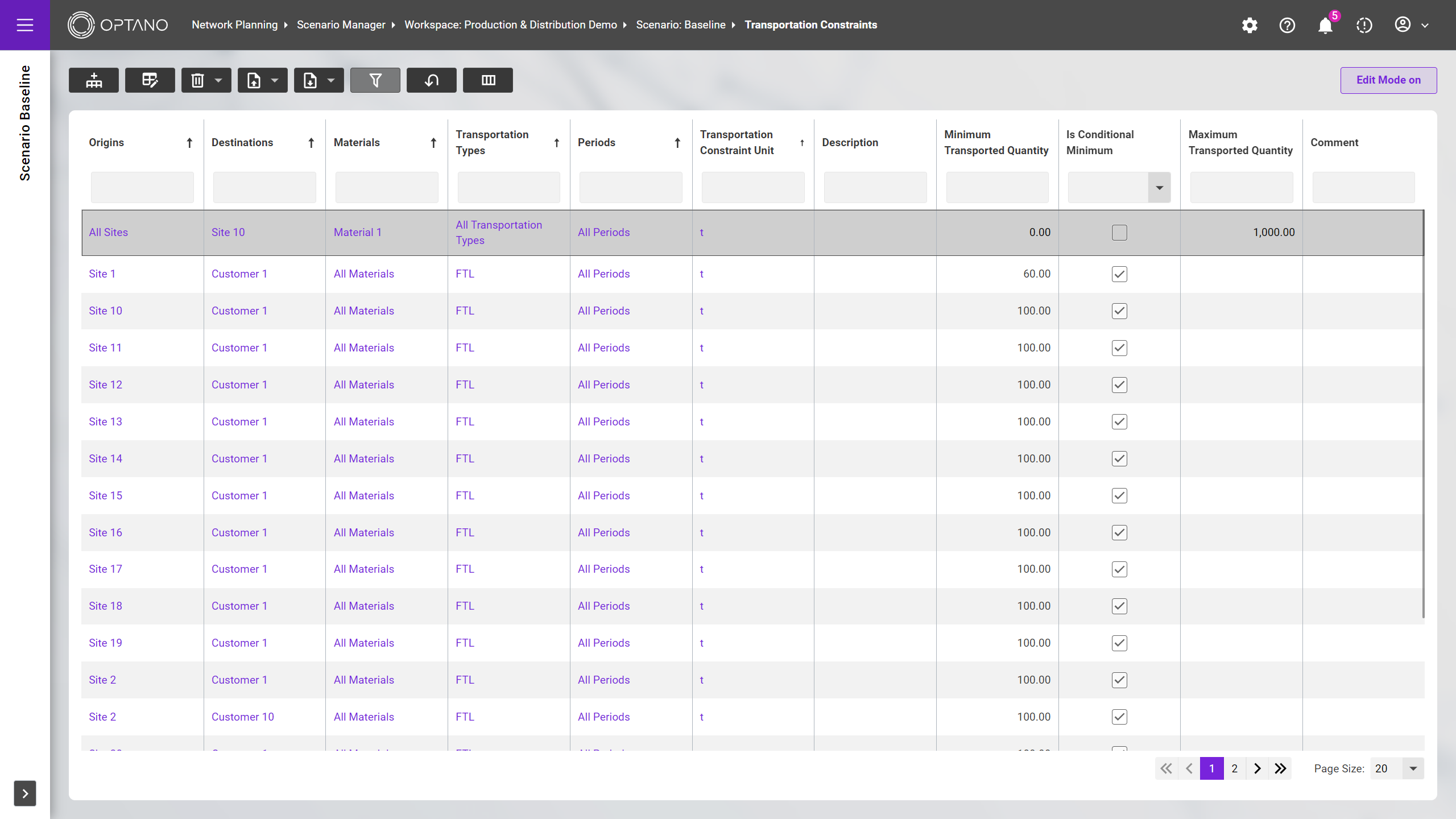
This feature enables the use of multiple units and currencies within the supply chain model. Users can select the most appropriate unit for each step-whether it’s pieces for demand, truckloads for transportation, or kilograms for production-and the model will automatically handle the conversions. Similarly, different currencies can be used and the model will seamlessly manage the conversions so that customer requests can be handled in their respective currencies. This flexibility ensures more accurate and adaptable modeling across different supply chain scenarios.
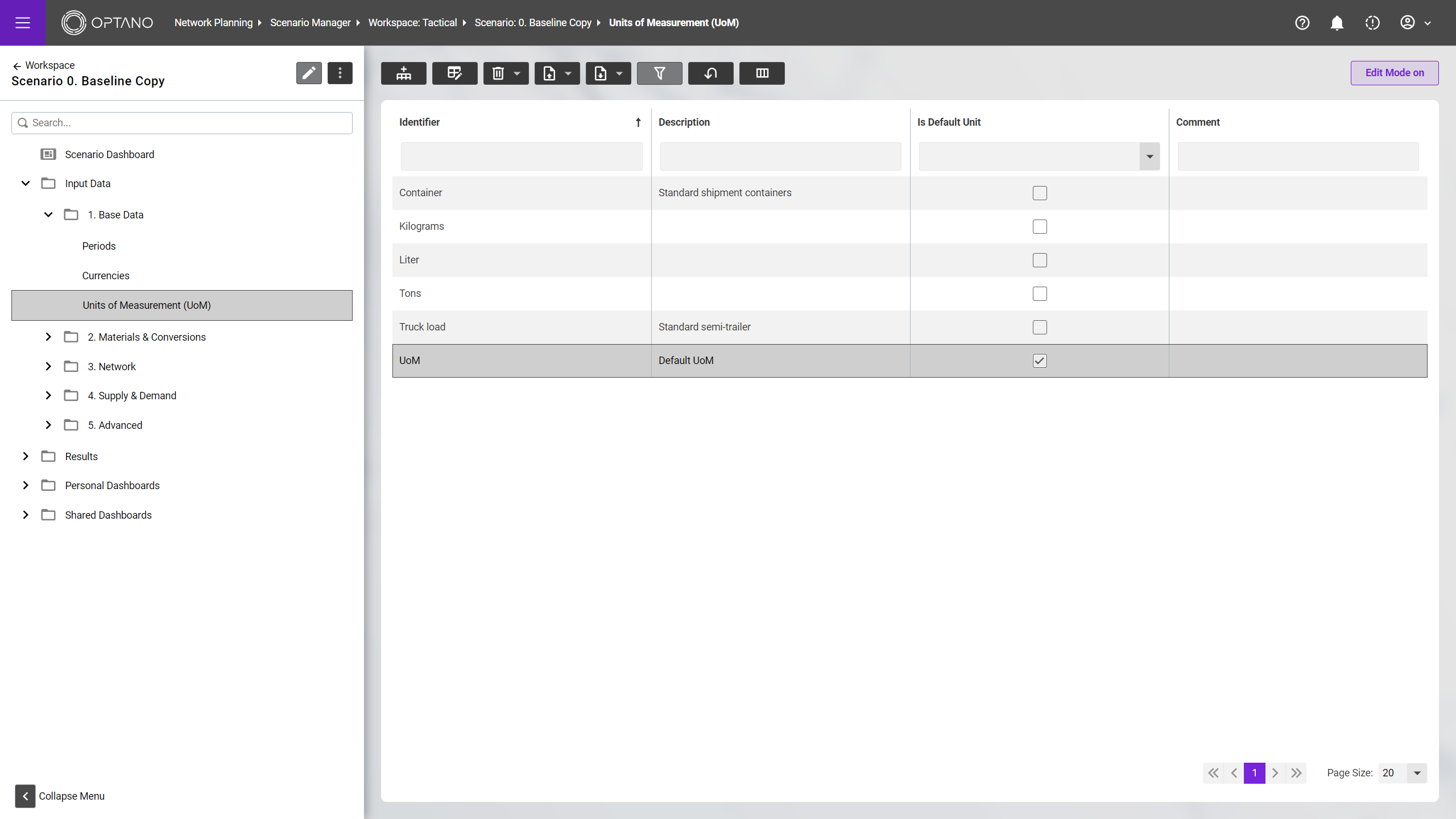
Our latest update streamlines your data structures for greater efficiency. With fewer tables and columns grouped by similar functionality, managing your data becomes effortless. Based on more than a decade of experience, our refined data model now includes only three essential location types: Sources, Locations, and Customers. This clear and intuitive structure simplifies data management and navigation, saving you time. The reduced number of tables and straightforward classification make functionality easier to find and use. In addition, the simplified model lowers the barrier to entry for new users, ensuring quick and easy onboarding so new team members can be productive quickly. Start using our enhanced data management capabilities today and experience the benefits of streamlined functionality in your daily operations.
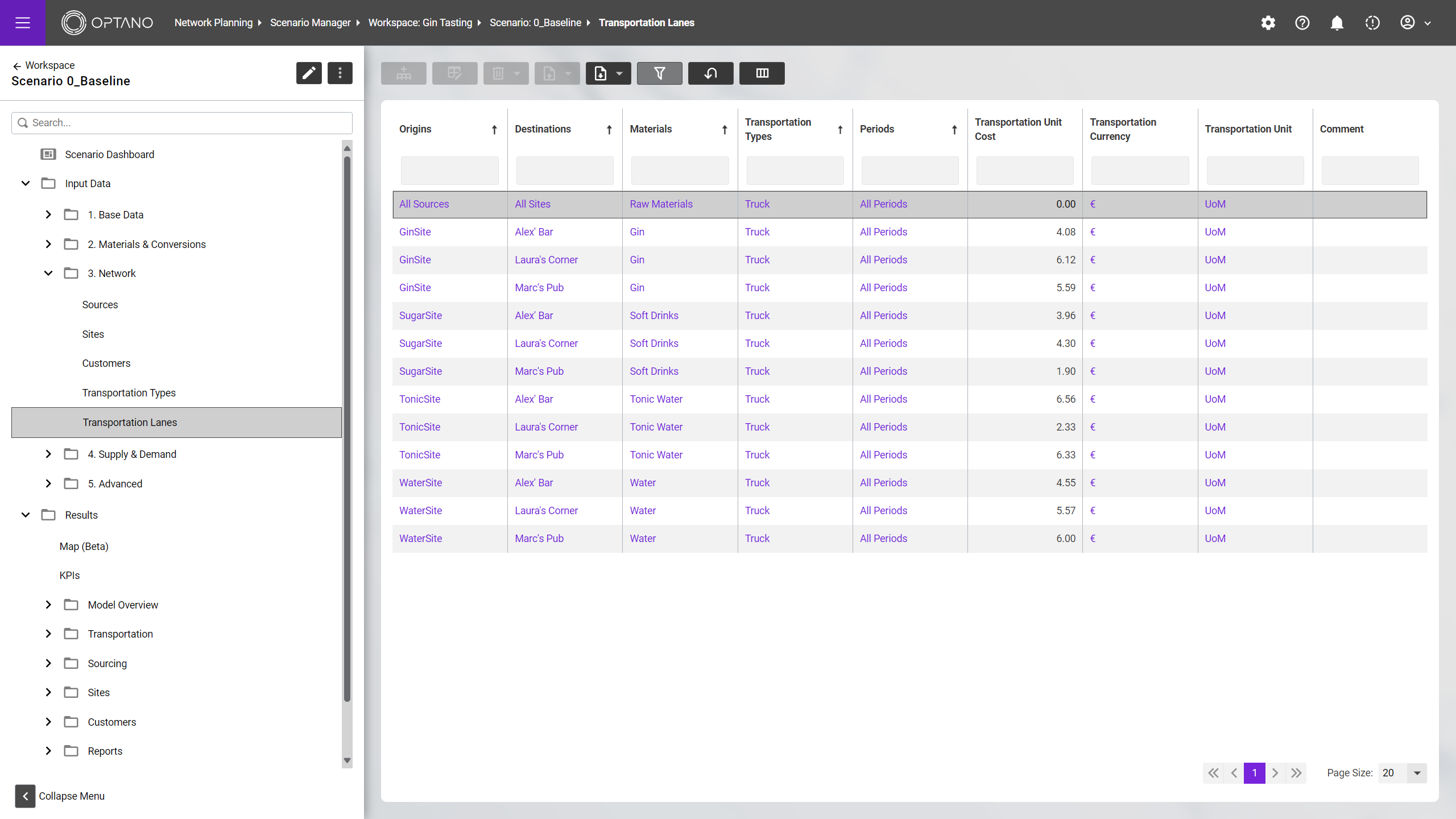
Contact
How can we help you?
You are also welcome to use our contact form. We will then get back to you as soon as possible!
We look forward to talking to you!


